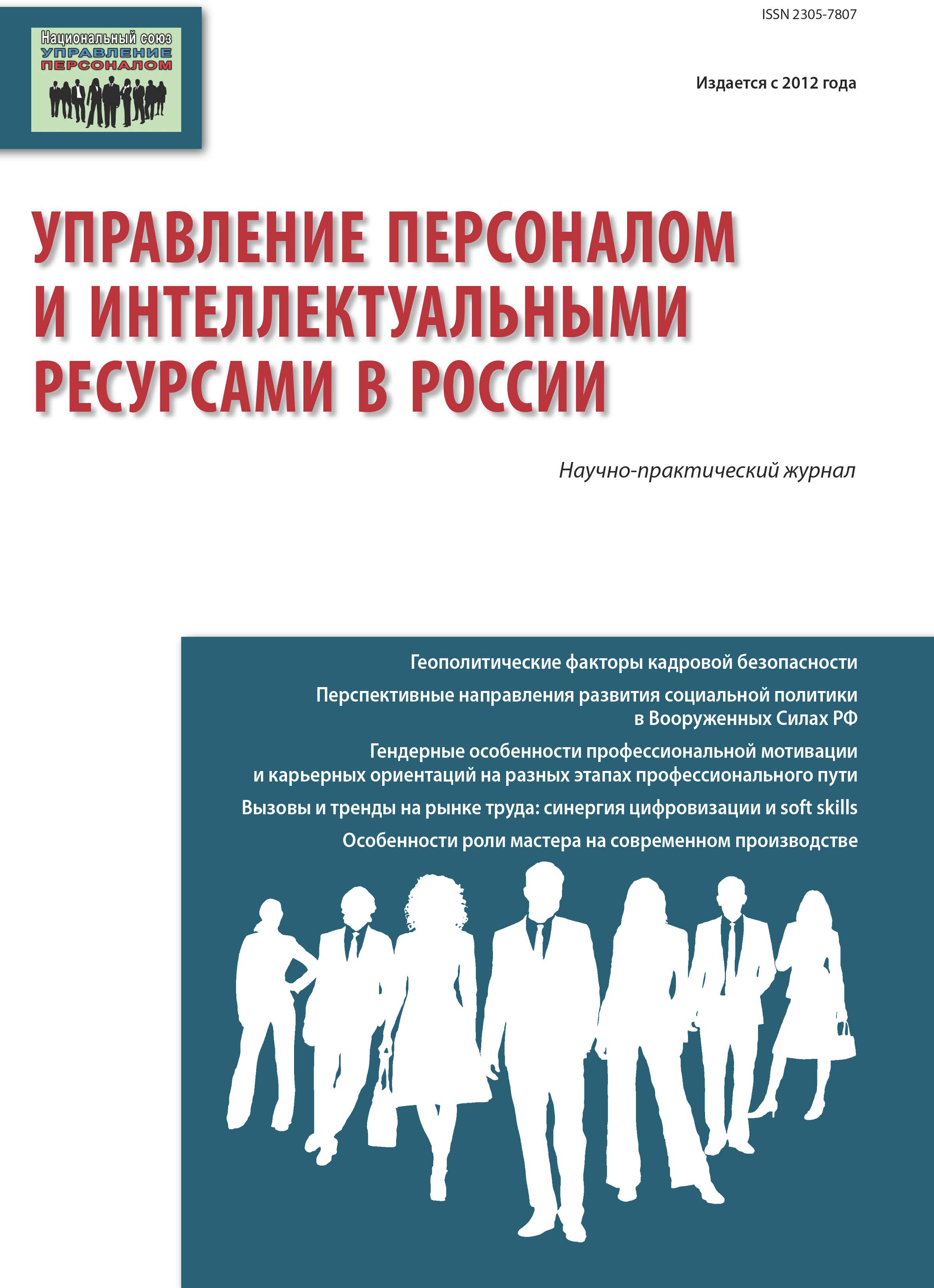Moskva, Moscow, Russian Federation
The article considers the essence and the reasons for the formation of professional deformation in various fields of activities, identifies the levels of their manifestations, including: general professional deformations, special professional deformations, professional typological deformations, individualized deformations. The main implications of professional deformation, seriously affecting the professional development and effectiveness are analized, including: disintegration of professional development, distorted development professional, low professional mobility, increased deformation of the personality, etc. Psychological determinants of the personality, contributing to the professional deformation are allocated. Special attention is paid to the peculiarities of professional deformation of leaders: distinguished features, including gender, professional deformation managers; the factors that determine the risk of burnout of managers as a non-specific professional deformation are summarized, including basic personality traits, models of overcoming behavior in difficult or critical situations, the style of behavior in conflict situations, managerial skills.
professional deformation, distorted professional development, deformation of the personality-semantic sphere, gender-specific professional deformation leaders, non-specific professional deformation, the risk of burnout.
Высокое положение оказывает на нас
столь разлагающее влияние, что отказываться
от него не в нашей власти.
Джордж Сэвил Галифакс
Особенности профессиональной деятельности и профессиональной среды предъявляют к человеку определенные требования и неизбежно накладывают отпечаток на особенности его личности, приводя с течением времени к так называемой профессиональной деформации — деструктивные изменения качеств личности, которые негативно влияют на ее продуктивность, создают препятствия для дальнейшего развития и самосовершенствования профессионала, порождают проблемы в личностном общении.
Профессиональные деформации появляются под влиянием условий труда, стереотипов профессиональной деятельности, механизмов психологической защиты, возрастных изменений личности. Они могут носить эпизодический или устойчивый характер, быть поверхностной или глубокой.
В наибольшей степени профессиональной деформации подвержены те, чья деятельность предполагает постоянное взаимодействие с людьми — врачи, педагоги, руководители, представители социальных служб и сферы услуг, чиновники, полицейские и т.д. Во многих профессиях, в которых специалистам приходится общаться и взаимодействовать с большим числом людей, вырабатывается стереотипность используемых приемов как механизм экономизации затрачиваемых усилий. Правда, как подчеркивают авторы публикаций, посвященных указанной проблеме (Безносов С.П., Маркова А.К. и др.), причины и механизмы возникновения, а также способы выражений профессиональных деформаций у представителей разных профессий различаются [1, 2, 3].
1. Beznosov S.P. Professional’naja deformacija. - SPb.: Rech’, 2004.
2. Markova A.K. Psihologija professionalizma. - M.: Mezhdunarodnyj gumanitarnyj fond «Znanie», 1996.
3. Zeer Je.F., Symanjuk Je.Je. Psihologija professional’nyh destrukcij : ucheb. posobie dlja vuzov. - M.: Akademicheskij Proekt; Ekaterinburg: Delovaja kniga, 2005.
4. Il’in E.P. Rabota i lichnost’. Trudogolizm, perfekcionizm, len’. - SPb.: Piter, 2011.
5. Zeer Je.F. Psihologija professij. - M.: Fond «Mir», 2005.
6. Konovalova, V. Trudogolizm: svobodnyj vybor ili navjazannaja model’ povedenija //Zhurnal «Kadrovik», №9, 2015, s. 95-107.
7. Symanjuk Je.Je., Devjatovskaja I.V. Vlast’ kak faktor deformacii lichnosti rukovoditelja obrazovatel’nogo uchrezhdenija // Pedagogicheskoe obrazovanie v Rossii, 2012. №6. S. 44-49.
8. Basova O.A. Deformacija lichnostno-smyslovoj sfery topmenedzhera v zavisimosti ot urovnja personal’noj otvetstvennosti // Materialy IV Vserossijskogo s#ezda RPO. - M.: 2007. S. 83-84.
9. Eagly A.H., Carli L.L. Throigh the labirint: the truth about how women become leders. - Boston, MA: Harvard Business School Press, 2007.
10. Koening A.M., Eagly A.H., Mitchell A.A. & Ristikari, T. Are leader stereotypes masculine? A meta-analysis of three research paradigms // Psychological Bulletin, 137 (4), 2011, pp. 616-642.
11. Cassell C., & Walsh S. Organizational cultures, gender management strategies and women’s experience of work. Feminism & Psychology, 1997, 7(2): pp. 224-230.
12. Handbook of the Psychology of Women and Gender - Wiley; Reprint edition, 2004
13. Hoobler J.M., Lemmon G., & Wayne S.J. Women’s Managerial Aspirations: An Organizational Development Perspective // Journal of Management, 2014. 40: pp. 703-730.
14. Koshenova M.I. Specifika lichnostnoj deformacii zhenshhinyrukovoditelja //Mir nauki, kul’tury, obrazovanija. 2009. № 7 (19). С. 266-269.
15. Schaufeli W.B., Leiter M.P., Maslach C. Burnout: 35 years of research and practice // Career Development International, Vol. 14 No. 3, 2009, pp. 204-220.
16. Konovalova V. «Ogneopasnaja» rabota: organizacionnye simptomy i faktory professional’nogo vygoranija // Kadrovik, 2010. № 5. - S. 58-63, № 6 - S. 34-41.
17. Why Executive Burnout Is A Such Huge Problem //www.businessinsider.com/ceo-burnout-is-a-growing-problem-2013-5 (Data obrashhenija 21.02.2016).
18. When High Flying Executives Burn Out//www.managementtoday.co.uk/features/1171970/when-high-flying-executivesburn-out/ (Data obrashhenija 26.02.2016).
19. Vodop’janova N.E., Serebrjakova A.B., Starchenkova E.S. Sindrom psihicheskogo vygoranija v upravlencheskoj dejatel’-nosti // Vestnik SPbGU. Serija 6. 1997. V. 2, no 13. (in Russian)
20. Vodop’janova N.E., Starchenkova E.S. Sindrom vygoranija: diagnostika i profilaktika. 2-e izd. - SPb.: Piter, 2008.







